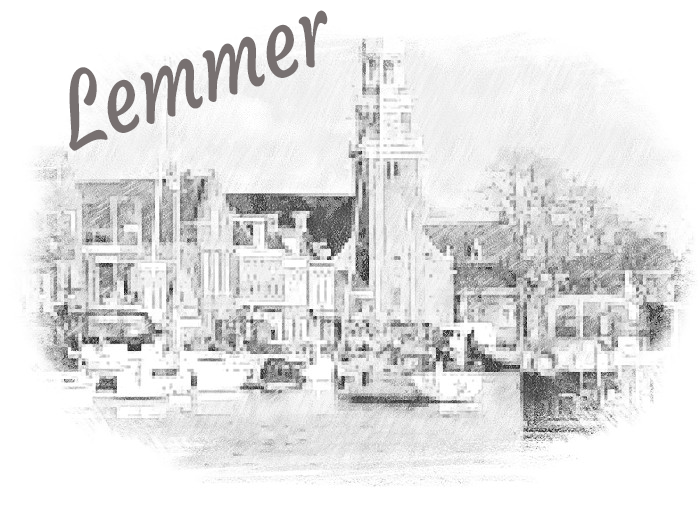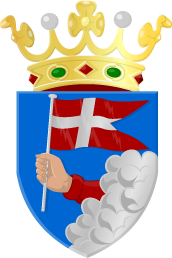lemmer

LEMMER STARTED AS A FISHINGVILLAGE
The history of Lemmer is closely tied to its location in the province of Friesland, in the northern part of the Netherlands. Lemmer is a small town situated on the shores of the IJsselmeer, a large inland lake that was once part of the Zuiderzee, which was a significant body of water in the Netherlands’ history.
Early History: The area around Lemmer has been inhabited for centuries, primarily by the Frisians, an ethnic group with a distinct language and culture. The Frisians were known for their seafaring activities, which played a crucial role in the region’s development.
Medieval Era: Lemmer started as a fishing village and gradually became an important center for trade and transportation due to its strategic location along waterways. During the Middle Ages, Lemmer was a bustling port, and it played a role in the Hanseatic League, a powerful trading network in Northern Europe.
The Zuiderzee: In the 20th century, the Dutch undertook an enormous engineering project to manage the waters of the Zuiderzee. The Zuiderzee was partially closed off by the Afsluitdijk in 1932, turning it into the IJsselmeer and the Wadden Sea. This had a profound impact on Lemmer and the surrounding region, as it shifted from being a seaside village to a lakeside town.
Modern Lemmer: Today, Lemmer is a charming town known for its maritime heritage, recreational boating, and water sports. Its location on the IJsselmeer makes it a popular destination for sailing and fishing enthusiasts. The town has a picturesque harbor filled with boats, and you can find many historic buildings that reflect its maritime past.
Tourism: Lemmer has also become a popular tourist destination, with visitors drawn to its waterside attractions, beautiful beaches, and the historic Lemster Sluice, which controls the water levels between the IJsselmeer and the Frisian Lakes. The town hosts various events and festivals throughout the year, celebrating its maritime heritage and culture.
In summary, Lemmer’s history is intertwined with its location along the waters of the Netherlands. From its early days as a fishing village to its role in the Hanseatic League and its transformation with the closure of the Zuiderzee, Lemmer has a rich maritime history that continues to shape its identity today as a charming and lively Dutch town.
sluice in lemmer
Lemmer is a small town in the province of Friesland, in the Netherlands. It is famous for its historic sluice, which was built in 1887 and is still in use today. The sluice, also known as the Lemstersluis, is a vital part of the town’s water management system. It connects two different water levels, allowing boats and ships to navigate safely between the IJsselmeer and the Frisian lakes. The sluice is also an important tourist attraction, drawing visitors from all over the world who come to marvel at its impressive size and functionality. The Lemstersluis is a testament to the ingenuity and resourcefulness of the Friesian people, who have been masters of water management for centuries.

Imagine stepping out into the charming town of Lemmer on a bright, sunny day. As you start your walk, you find yourself surrounded by picturesque views and a relaxed atmosphere. Lemmer is known for its beautiful waterfront and historic architecture, making it a delightful place to explore.
1. Lemmer Beach: Begin your walk by heading towards Lemmer Beach. Feel the soft sand beneath your feet and hear the gentle lapping of the water against the shore. The beach offers a perfect spot to take in the breathtaking views of the IJsselmeer, a large lake that used to be part of the sea.
2. Lemmer Harbor: Stroll along the promenade towards Lemmer Harbor. The harbor is bustling with activity as sailboats and fishing vessels come and go. Admire the colorful boats bobbing in the water and watch as seagulls glide overhead. You might even catch a glimpse of some local fishermen at work.
3. Historic Lemmer Center: As you continue your walk, make your way into the historic center of Lemmer. The streets are lined with charming old buildings, many of which have been lovingly preserved. Explore the small shops, cafes, and restaurants that dot the streets. Take a moment to admire the traditional Dutch architecture that gives Lemmer its unique character.
4. Woudagemaal Steam Pumping Station: A highlight of your walk is a visit to the Woudagemaal, a UNESCO World Heritage site and the largest steam-driven pumping station in the world. Marvel at the impressive machinery and learn about its role in keeping the surrounding land dry. Guided tours are available for those interested in delving deeper into the engineering marvel.
5. Lemster Toer: Next, make your way to the Lemster Toer, a historic tower that stands proudly in the town center. Climb the narrow staircase to the top for panoramic views of Lemmer and the surrounding area. On a clear day, you can see the vast expanse of the IJsselmeer and the Friesland countryside.
6. Lemmer’s Cafes and Cuisine: Wrap up your walk by indulging in some local cuisine. Lemmer offers a variety of dining options, from cozy cafes to seafood restaurants. Try some traditional Dutch dishes or sample fresh seafood caught right from the IJsselmeer.
As your virtual walk in Lemmer comes to an end, take a moment to reflect on the beauty and tranquility of this charming Dutch town. Whether you’re captivated by the waterfront, the historic architecture, or the warm hospitality of the locals, Lemmer offers a memorable experience for all who visit.


Lemmer is one of the Frisian villages of which an old village coat of arms has survived. This coat of arms already appears in Andries Schoemaker’s coat of arms from around 1695.The coat of arms has an unknown background, as does the coat of arms of Lemsterland, the municipality to which Lemmer once belonged. Further research is ongoing.
The woudagemaal
The Woudagemaal in Lemmer is the largest working steam pumping station in the world and a unique example of architecture and engineering from the early 20th century. It was built in 1920 to prevent flooding in the surrounding areas of Friesland, the Netherlands. The pumping station is still in operation, using its steam engines to pump water out of the lower lying areas into the IJsselmeer, protecting the land from floods. Its impressive machinery, including huge boilers and pistons, can be visited by the public, making the Woudagemaal an important cultural and historical landmark. In 1998, it was declared a UNESCO World Heritage site, acknowledging its importance and remarkable 100-year legacy.\
OPEN:April to October (and all school holidays): Tuesday to Saturday from 10 a.m. to 5 p.m. Sunday from 1 p.m. to 5 p.m. November and December, January to March 2024: Thursday to Saturday from 10 a.m. to 5 p.m. Sunday from 1:00 pm – 5:00 pm











